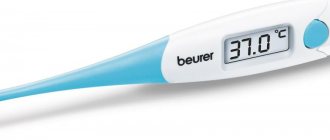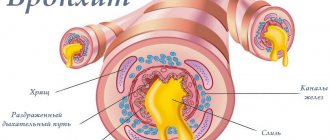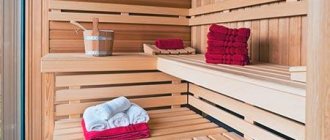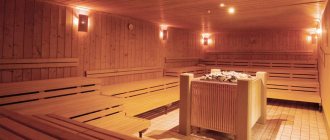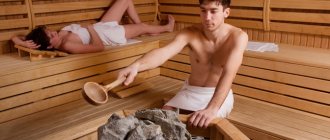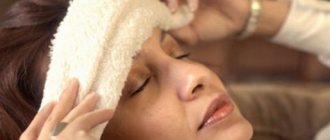Sinusitis: description of the disease
Symptoms of sinusitis
Sinusitis is usually understood as inflammation of the mucous membrane of the paranasal sinuses. The disease develops after an infection enters the body. The causative agent of the disease is various pathogenic microbes. Getting on the mucous membrane of the maxillary sinuses, they cause inflammation.
The causes of sinusitis are most often long-term chronic illness, complications after ARVI and influenza, and hypothermia.
The disease can occur due to various injuries to the nasal septum and allergic reactions.
Most often, the disease occurs in the cold season, with a decrease in immunity and the development of hypovitaminosis.
Sinusitis is characterized by the following symptoms:
- Nasal congestion
- Nasal discharge is mucous or purulent
- Feeling of pressure on the eyes
- Headache
- Increased body temperature
- General malaise
Treatment of inflammation of the maxillary sinuses is carried out comprehensively using antibacterial and anti-inflammatory drugs that have a vasoconstrictor effect.
In addition to drug treatment, it is recommended to use unconventional methods of treatment, which also include bath procedures.
Contraindications
With sinusitis, can everyone visit the steam room or not? Despite the fact that a bath for sinusitis has a favorable result, treatment with hot steam still has some prohibitions:
- diseases of the kidneys, cardiovascular system;
- predisposition to bleeding;
- diabetes;
- exacerbation of chronic diseases;
- It is not advisable to visit during pregnancy, breastfeeding, or during menstruation.
A bathhouse for sinusitis at the very beginning and end of the development of the disease will have a good effect. In the presence of acute inflammation and elevated body temperature, the steam room will only cause harm. Therefore, the admissibility of visiting the bathhouse should be discussed with your doctor.
Can you go to the bathhouse if you have sinusitis?
Bath for sinusitis
In most cases, sinusitis appears as a cold. Therefore, it is important not to miss the beginning of the developing process and go to the steam room. In acute cases of sinusitis, it is advisable to avoid water procedures, as inflammatory processes may intensify.
Visiting the bathhouse is especially useful during the recovery stage after treatment of sinusitis in order to get rid of traces of the disease.
Bath procedures for inflammation of the maxillary sinuses have a beneficial therapeutic effect.
During the session, heat and steam are released, so the bath can be considered an alternative option for warming up and inhalation.
The high temperature in the bath has a detrimental effect on microbes. The pores of the skin open and the hot air burns them, thereby preventing them from spreading further. In the bathhouse it is possible to add a few drops of healing oil to the heater. As a result, metabolic processes in the body are accelerated, which contributes to rapid recovery.
Before visiting the bathhouse, you should consult a doctor and also monitor your general health. At the very peak of the disease, when the symptoms are especially acute, steaming is prohibited. At high temperatures, it is strictly prohibited to stay in the steam room.
What can you do and what can you not do?
If a person suffers from chronic sinusitis, it will be useful to steam your feet when visiting a bathhouse or sauna. It won't hurt to add a small amount of mustard, essential oils of pine needles, eucalyptus or mint to hot water. A sharp change in temperature can negatively affect the condition and worsen the course of the disease, therefore, with sinusitis, regardless of what stage of treatment it is at, it is not allowed to go outside immediately after visiting the sauna.
It is important to remember that a bathhouse has significant differences from a sauna. This applies to the action of steam and air temperature, humidity. For those who like to steam in a bathhouse, the procedure for heating the lower extremities is more important. It is allowed to float your feet if sinusitis is in a chronic stage and the person does not feel a general malaise. This procedure helps to warm up the entire body and is very popular in the treatment of colds. There is another variation of warming up in a bathhouse or sauna. A person should sit on a shelf, stretch out his legs and whip his feet with a bath broom. It will be more convenient if another person does it. Such manipulations are allowed even with acute sinusitis. But you should not hover your nose during an exacerbation of the disease, as this can provoke a worsening of the condition. An optional condition is to carry out foot manipulations in hot water; adding a small amount of dry mustard and essential oils to warm water will bring much more benefit.
How to cure sinusitis in a bath
You can significantly alleviate the symptoms and improve your general condition with the help of decoctions, medicinal ointments and herbal applications. You can also do rinsing, inhalation, and instillation.
Initially, it is recommended to remove the pus that causes swelling and headaches.
Effective in the fight against sinusitis in the bath are medicinal herbs such as St. John's wort, lavender, yarrow, coltsfoot, etc. To prepare a decoction, take a spoonful of any herb and pour a glass of boiling water. Boil the decoction in a water bath for 10 minutes. Next, dilute the prepared healing decoction in water.
Healing herbs can also be placed on the heater and the vapors can be inhaled.
Garlic has a good healing effect. It should be passed through the garlic and the resulting pulp should be rubbed into the sinus area.
So that the result does not take long to arrive, you can put turundas in the bathhouse. As a medicinal composition you should take:
- Laundry soap, onion juice, butter and milk. All ingredients must be taken in equal quantities.
- Heat the mixture slightly in a water bath and add honey.
- Soak cotton swabs in the mixture and insert into each nostril for 10-15 minutes.
- After the procedure, you need to blow your nose well.
More information about sinusitis and treatment of the disease can be found in the video.
After bath procedures, to consolidate the effect, you can apply a medicinal ointment made from onions to the area of the maxillary sinuses. It should be finely chopped until mushy. Add 15 g of copper sulfate and 200 g of spruce resin to the gruel. Stir the mixture and add 50 mg of olive oil.
Treatment of sinusitis in a bathhouse using phytoapplications is best done in the warm season. After the procedure, hypothermia should be avoided. Among the many recipes, you can choose the one that suits you; it is recommended to first consult with an otolaryngologist.
Reasons why you should visit the bathhouse
As it turned out, you can go to the bathhouse with sinusitis, the main thing is not to waste time, but to go there when the initial symptoms of a cold occur.
If you have a runny nose, a steam room will be an excellent treatment option, this can be noticed for several reasons:
- The high temperature of the bath room is the main enemy of microorganisms. Passing through the skin vapors, the hot temperature kills them.
- Contrasting measures will eliminate runny nose and acceptable complications.
- Aroma oils, if sprinkled on the heater, will have a good effect and help cure the disease. It is excellent to inhale bath steam using oils that can destroy the infection. For inhalations, eucalyptus tree oil is used, as well as decoctions of chamomile, mint, thyme, etc.
Before taking a steam bath, you must do the following procedures:
- rinse and clean the maxillary sinuses from pus;
- perform inhalation;
- The nose must be instilled with the prescribed remedy.
Contraindications for bathing procedures in case of illness
Contraindications for baths for sinusitis
Not everyone can visit the bathhouse if they have sinusitis. There are certain conditions when bath procedures are contraindicated in case of inflammation of the mucous membrane of the maxillary sinuses.
It is not recommended to visit the sauna for sinusitis if you have the following diseases:
- Kidney diseases
- Diabetes
- Diseases of the cardiovascular system
- Tendency to bleed
Bath procedures as a method of treating sinusitis are not suitable for people suffering from chronic diseases in the acute phase. If acute and infectious processes develop in the body, visiting the bathhouse is contraindicated.
If during the steaming process you feel weakness, dizziness, or nausea, you must stop bathing procedures.
In this case, it is advisable to go to bed and drink plenty of fluids. To ensure that visiting the bathhouse brings only benefits, it is important to adhere to the following recommendations:
- Before applying heat, you should listen to your body. The steam room should be comfortable.
- If you have sinusitis in the bathhouse, you need to breathe deeply through your nose.
- The first visit to the bath should not exceed 15 minutes, then the duration of the bath procedures can be gradually increased.
- You should try to avoid hypothermia after visiting the steam room.
- It is important to drink plenty of fluids.
- After a bath, it is not advisable to douse yourself with cold water to avoid hypothermia.
Suprax for sinusitis: instructions for children and adults
Rules for visiting a sauna for sinusitis
In order for heat to benefit the body and contribute to the treatment of sinusitis, you need to consider the following recommendations:
- The optimal time for bath procedures is a quarter of an hour. If your health does not worsen, subsequent sessions can be gradually increased to 20–30 minutes.
- Use cotton swabs to protect your ears.
- You should breathe deeply through your nose. Pre-clean it of mucus by rinsing it with saline solution.
- Drink warm herbal infusions. Alcohol is contraindicated.
- After the procedure, you need to dress warmly.
- To avoid temperature changes, you should not go directly outside.
Characteristic signs of sinusitis
The main and main sign indicating the occurrence of pathology is congestion in the nasal cavity, which makes it difficult for the patient to breathe through the nose. Due to congestion, a nasal tone develops, and overall well-being noticeably decreases. There are several characteristic symptoms related to acute sinusitis:
- Acute headache. Painful sensations in the nasal area.
- Toothache.
- Painful sensations in the infraorbital areas. Pressing provokes pain intensity.
- Puffiness under the eyes, redness.
The pathological process often becomes chronic, in which the symptoms become mild and erased. With chronic sinusitis, the patient experiences swelling of the eyelids, conjunctivitis, and lacrimation in the morning.
Patients often suffer from a dull sense of smell, and structural deformations of the sinuses of the upper jaw may occur.
Reasons for the development of sinusitis
The disease manifests itself in the patient for several reasons. Often sinusitis is a consequence of:
- colds, respiratory diseases, due to which the nasal mucosa is affected by the inflammatory process;
- chronic runny nose;
- infections affecting the nasal cavity.
Causes of sinusitis:
- Wrong therapy.
- Reduced immunity.
- Allergic reaction.
- Hypothermia.
- Deviation of the nasal septum.
- Chronic pharyngitis or rhinitis.
Rules for visiting a bathhouse for a child
- It is better to make your first trip to the sauna rather than to the bathhouse. Since dry air is easier for children to tolerate.
- Children over 1 year old are allowed to visit the sauna. But if the mother visited such institutions during pregnancy, and from birth the parents were engaged in hardening the child, then visiting is allowed from 7 months.
- The first visit to the steam room should not exceed 2-3 minutes. Each subsequent stay of the baby in the steam room can be increased by 1-2 minutes. For children under 7 years of age, the temperature in the steam room should be maintained at 70-80 °C, and the humidity should be no more than 10%.
- During one trip to the sauna, the number of times you enter the steam room should not exceed 4 times.
- It is recommended to carry out the first trips with one of the parents, preferably in their arms. This will reduce the risk of fear or stress in your baby.
- In the steam room, children can only be on the lower shelves.
- It is prohibited to leave children in the steam room without parental supervision.
The above can be considered recommendations. This does not mean that your child should sit in the steam room for 2-3 minutes, etc. You should always focus on your baby’s well-being and behavior.
If your child suffers from allergies, it is better to refrain from using essential oils.
Try to make sure that the child in the sauna drinks a lot of liquid, tea, compote, but everything should be warm.
In what cases will baths and saunas be beneficial?
You can visit and take a steam bath with sinusitis, but this method of treatment is not the main one. It is classified as an auxiliary and is used in parallel with medications and inhalations. With its help, recovery occurs faster and overall well-being improves.
Dry and moist heat has a positive effect at different stages:
- in the initial stages, while the body temperature is normal;
- for chronic rhinitis during remission, when the exacerbation is eliminated;
- during the end of the illness, when the purulent discharge has stopped and there is no fever; • at the recovery stage, so that residual effects quickly pass.
The bath for sinusitis has a pronounced therapeutic effect. During bathing procedures, steam and hot air are released in the steam room, which resembles the process of inhalation. By expanding the air passages, microbes are destroyed that die at high temperatures in the environment.
Positive effects of baths and saunas
It is useful to go to the bathhouse with sinusitis, since hot and humid air vapors have a healing effect:
- Liquefies the contents of the maxillary sinuses and cleanses them. The beneficial properties are more pronounced if, during the procedure, the nasal sinuses are washed with a decoction of salt or herbs.
- With significant sweating, toxic compounds, which are waste products of microorganisms, are excreted through the skin.
- In conditions close to extreme for the body, metabolic processes are enhanced, resulting in rapid recovery of the body.
- They improve blood circulation, as blood vessels dilate under the influence of high temperatures.
- Inflammatory reactions partially decrease and gradually return to normal.
Thus, in the bathhouse and sauna, muscles relax, blood flow increases, and sweat glands open. Removal of toxins, toxic products, and metabolic waste occurs. Accumulated mucus is thinned and drainage is improved, swelling of the mucous membrane is reduced and the epithelium is restored much faster. Therefore, the benefits of going to the bathhouse for sinusitis are beyond doubt.
Features of the heating process
If we are talking about a clinic, warming up in a hospital occurs by inhalation, using UHF and under the influence of a lamp. You can influence the course of treatment at home using a blue lamp. The technique uses infrared rays to warm up the maxillary sinuses. The penetration depth is about four centimeters.
During the process, it is necessary to keep the device fifteen centimeters from the affected area so as not to negatively affect the tissue. Warming up should be done about three times a day. The blue lamp is not used for purulent formations.
It is often used to warm boiled eggs. Warming occurs using several methods:
- One boiled egg is applied first on one side, then on the other for several minutes. It is necessary to change sides of the nasal cavity.
- Two eggs are boiled, each of which is applied at the same time on both sides.
They resort to any of the methods, bringing the body into a supine state for half an hour. Within an hour after the procedure, you must avoid walking in the sun. In case of elevated temperature, heating with an egg is contraindicated.
The procedure is carried out by frying a small volume of salt crystals in advance. After heating, salt is poured into a cotton cloth to avoid burning the fabric.
Heat must be applied to the maxillary sinus. You can warm up the forehead area only in case of mild sinusitis. This must be done carefully: if there is a burning sensation and discomfort occurs, you need to wrap the salt in another layer of cloth.
Physioheating
During consultation, a specialist will help in selecting effective therapy. It is possible to prescribe electrophoresis, ultrasound and ultra-high frequency therapy and light therapy.
- Bathhouse. Often, at the beginning of the development of pathology or towards the end of therapy, they resort to bath procedures that have a beneficial effect on the body. When clouds of steam enter the nasal area, they effectively warm the sinuses and serve to thin the mucus. When asked whether it is possible to go to the bathhouse with sinusitis, a doctor will best answer.
- Heat compresses. A napkin, which must be moistened with liquid or medicinal herbs, has a beneficial effect on treatment. The best herbs to use are chamomile or St. John's wort.
- Herbal inhalations. Herbal inhalations have antiseptic and anti-inflammatory properties. They are used in an integrated approach to treatment.
Often the warming process can contribute to the complication of the disease. Due to improper therapy, the disease can spread to other organs, contributing to the deterioration of the patient’s well-being. Because of this, you should not treat such a disease on your own: it is better to go to the doctor.
